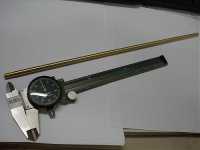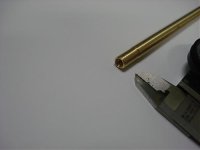J
Joe Ponto
Guest
Gordy it was a pleasure meeting you in person at the show. I wish I had more time to go over the technical points. One thing I have a difficult time with is the accuracy of the 12" (or longer) rod which has clearance in the pilot/bushing. I don't see how you can get proper readings with this inherent float/pivot.
Wouldn't a ground gage pin 12" long provide the best indicator for alignment?
Wouldn't a ground gage pin 12" long provide the best indicator for alignment?



